During hurricane season, your emergency plan should include a list of emergency supplies – along with a plan for safe food and water – that can get through a storm and the potential lengthy and unpleasant aftermath.
Credit: NOAA – National Weather Service
Hurricane Preparedness
Plan ahead and learn what to do to keep your home and family safe with these tips from the National Weather Service – Hurricane Preparedness website:
- Learn about proper hygiene, cross contamination, cold and hot food safety, foodborne pathogens, and best practices to prevent foodborne illness.
- Food Manager Training & ANSI Certification - $99.00
- Food Handler Training - only $7.00!
- HACCP Training: 16hr/4hr/1hr
- Food Allergy Training - $15.00
- Enter Promo "train10off" at Checkout
1. Determine Risk
Find out what types of wind and water hazards could happen where you live, and then start preparing now for how to handle them. Hurricanes are not just a coastal problem. Their impacts can be felt hundreds of miles inland, and significant impacts can occur without it being a major hurricane.
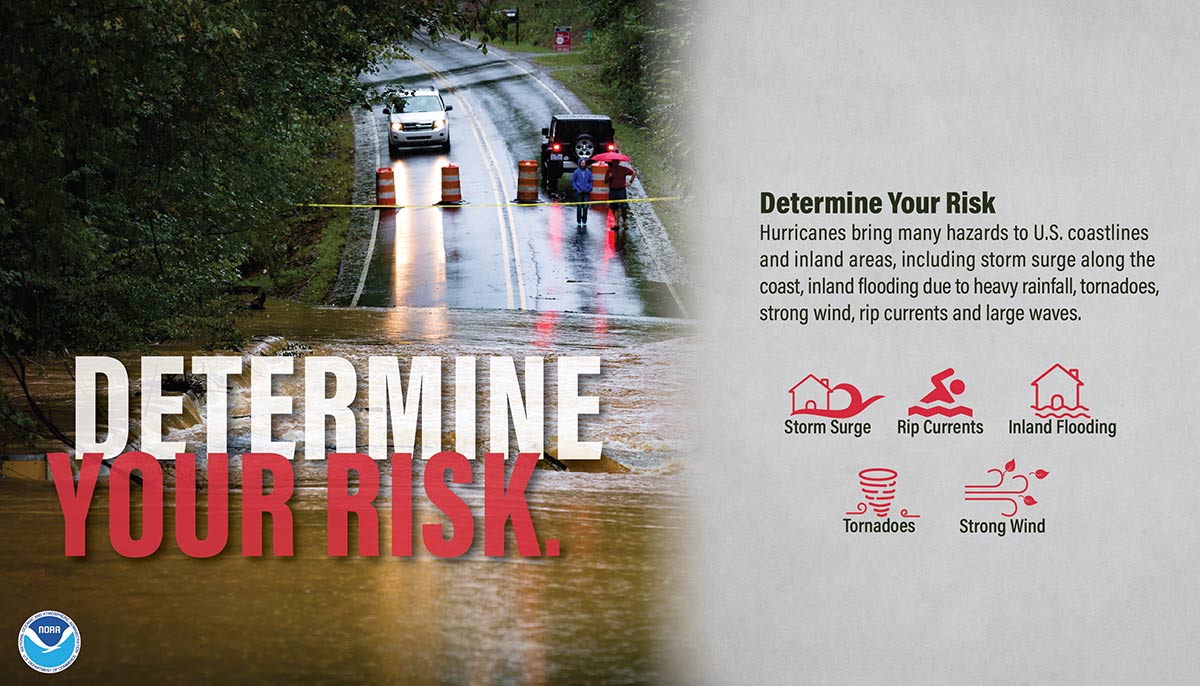


2. Develop Evacuation Plan
The first thing you need to do is find out if you live in a storm surge hurricane evacuation zone or if you’re in a home that would be unsafe during a hurricane. If you are, figure out where you’d go and how you’d get there if told to evacuate. You do not need to travel hundreds of miles. Identify someone, perhaps a friend or relative who doesn’t live in a zone or unsafe home, and work it out with them to use their home as your evacuation destination. Be sure to account for your pets, as most local shelters do not permit them. Put the plan in writing for you and those you care about.
Free Printable – Emergency Communications Cards
Develop an Emergency Communications Plan with these FREE ID Cards – when family members are separated and communication devices and towers are damaged or out of service – during a disaster emergency.
Establish a family meeting place that’s familiar and easy to find. Provide copies to each family member.
- PDF Format: View & Print
- Fill out electronically, cut and fold, and keep on person.
- Install Acrobat PDF Reader: http://get.adobe.com/reader/
- Print Media: Standard white 8.5″ x 11″ inkjet paper – Landscape Orientation



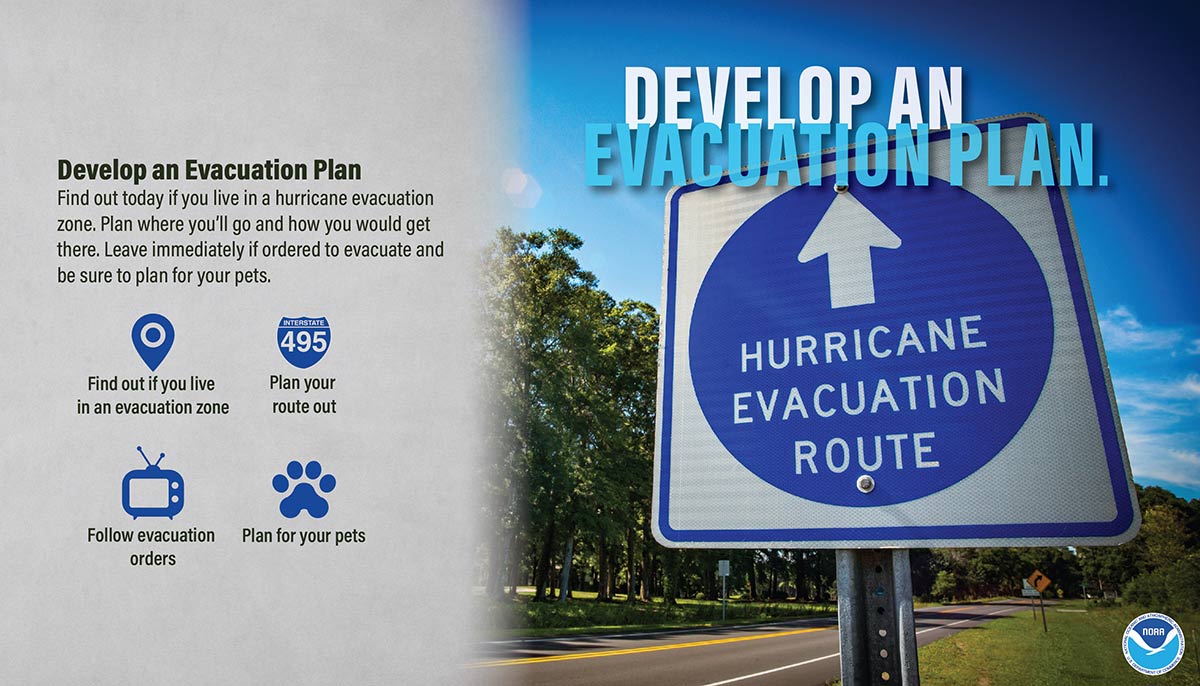


3. Assemble Hurricane Disaster Supplies
You’re going to need supplies not just to get through the storm but for the potentially lengthy and unpleasant aftermath. Have enough non-perishable food, water and medicine to last each person in your family a minimum of one week. Electricity and water could be out for at least that long. You’ll need extra cash, a battery-powered radio and flashlights. Many of us have cell phones, and they all run on batteries. You’re going to need a portable, crank or solar powered USB charger.
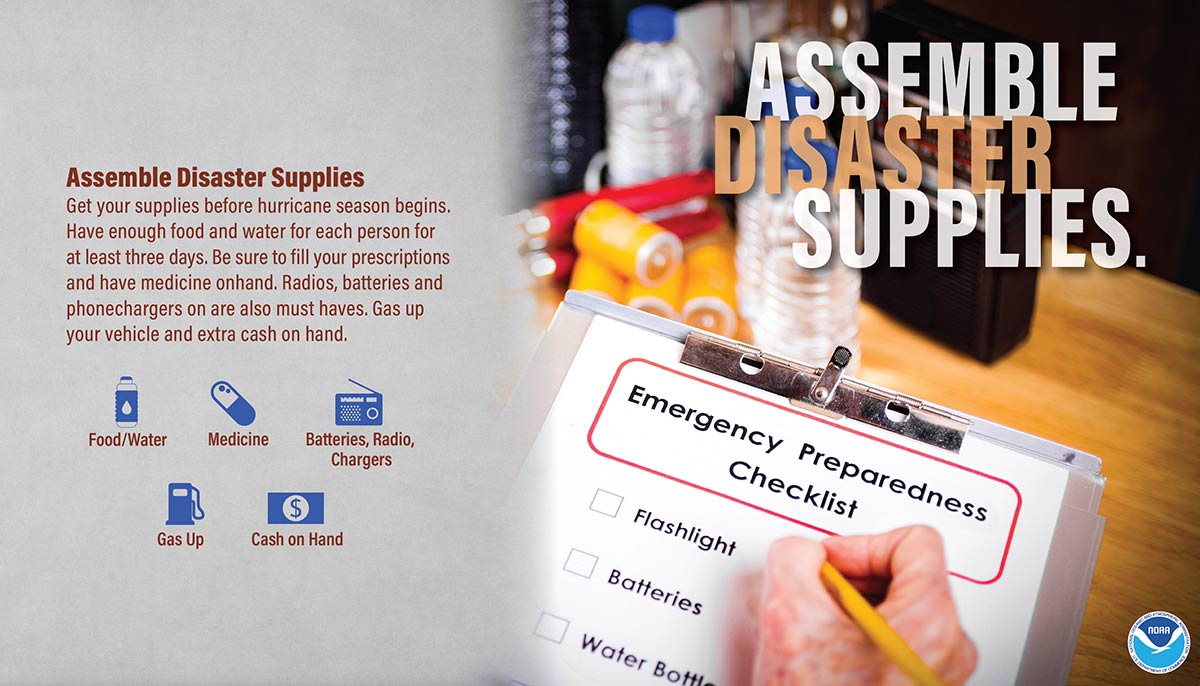


Emergency Supplies Checklist
A disaster (emergency) supplies kit is simply a collection of basic items your household may need in the event of an emergency. Try to assemble your kit well in advance of an emergency.
Have different kits ready for your home (shelter-in-place), for anywhere – so you can “grab-and-go” (mobile), and for your vehicle (in case you are stranded).
- PDF Format: View & Print
- Install Acrobat PDF Reader: http://get.adobe.com/reader/
- Print Media: Standard white 8.5″ x 11″ inkjet paper – Landscape Orientation – 2 pages
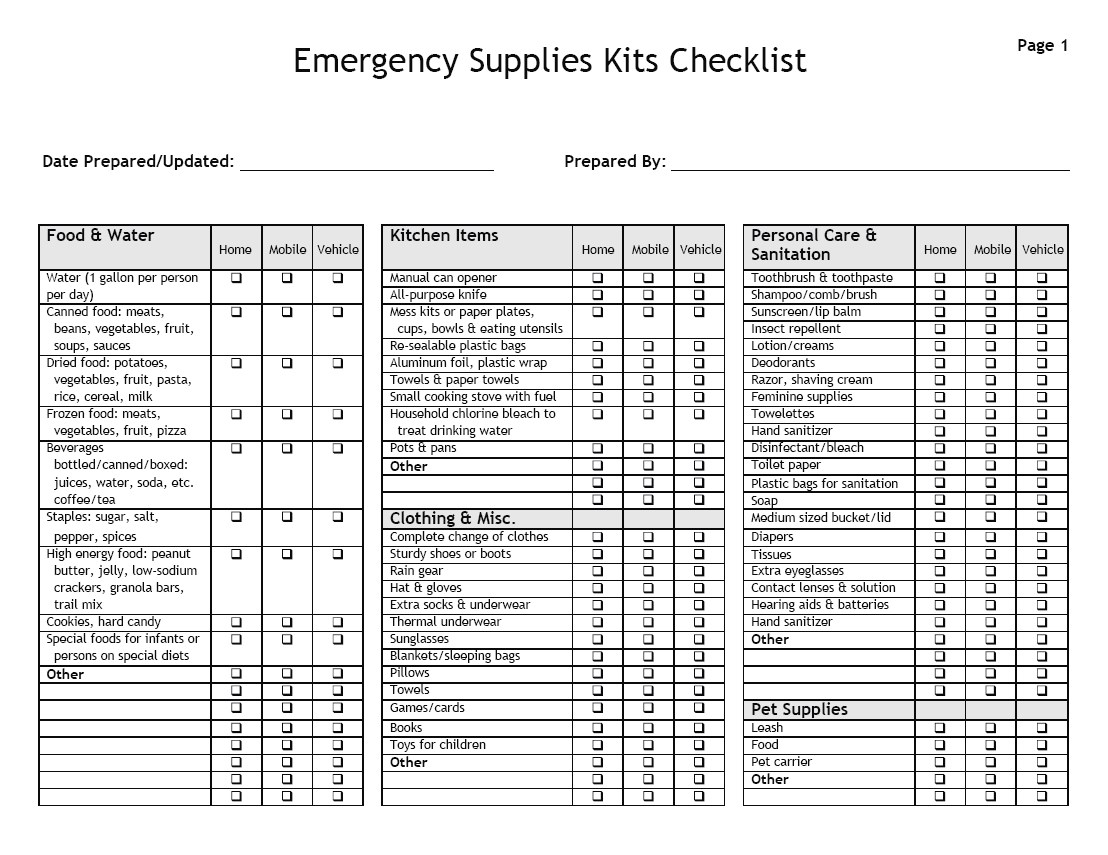


- Best Rated Emergency and Disaster Food Survival Kits - Powered by Amazon®.
- Emergency Food Survival Kits for all disaster situations.
- Best selection and deals! Free 2-Day Shipping with Amazon Prime.
- Best Rated Emergency and Disaster Preparedness Survival Kits - Powered by Amazon®.
- Emergency Disaster Survival Kit for all situations. Equipped with top survival items. FEMA Compliant Kits.
- Best selection and deals! Free 2-Day Shipping with Amazon Prime.
3. Insurance Checkup
Call your insurance company or agent and ask for an insurance check-up to make sure you have enough homeowners insurance to repair or even replace your home. Don’t forget coverage for your car or boat. Remember, standard homeowners insurance doesn’t cover flooding. Whether you’re a homeowner or renter, you’ll need a separate policy for it, and it’s available through your company, agent or the National Flood Insurance Program at www.floodsmart.gov. Act now as flood insurance requires a 30-day waiting period.
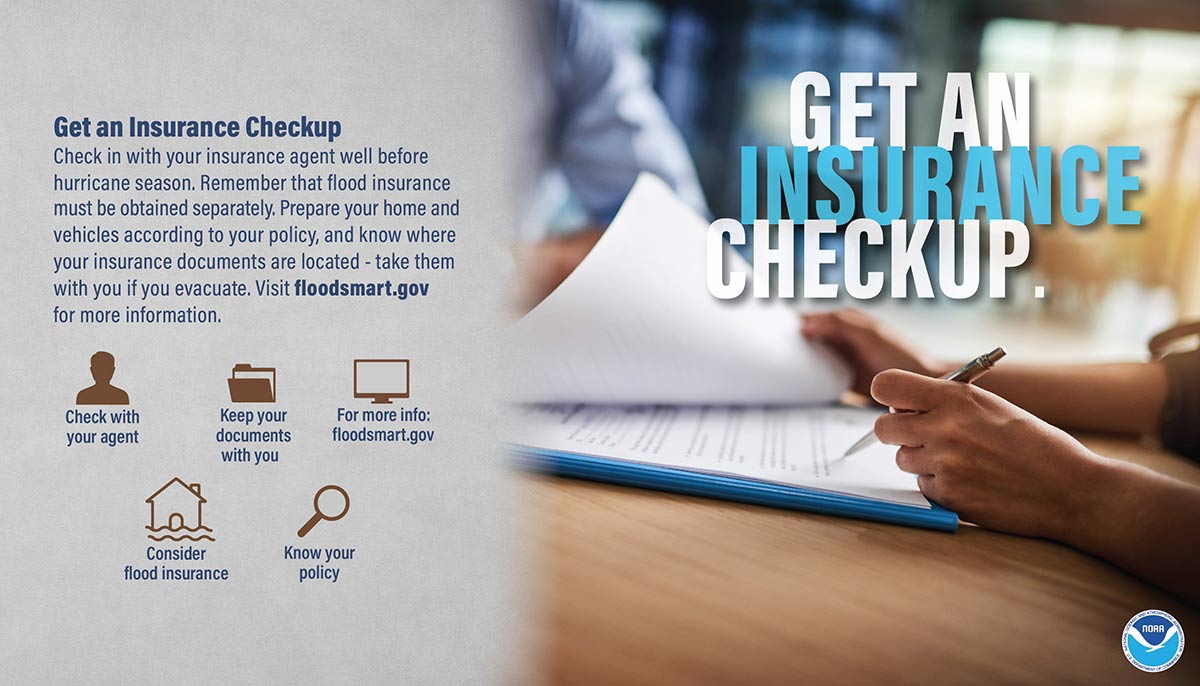


4. Strengthen Home
If you plan to ride out the storm in your home, make sure it is in good repair and up to local hurricane building code specifications. Many of these retrofits do not cost much or take as long to do as you may think. Have the proper plywood, steel or aluminum panels to board up the windows and doors. Remember, the garage door is the most vulnerable part of the home, so it must be able to withstand the winds.
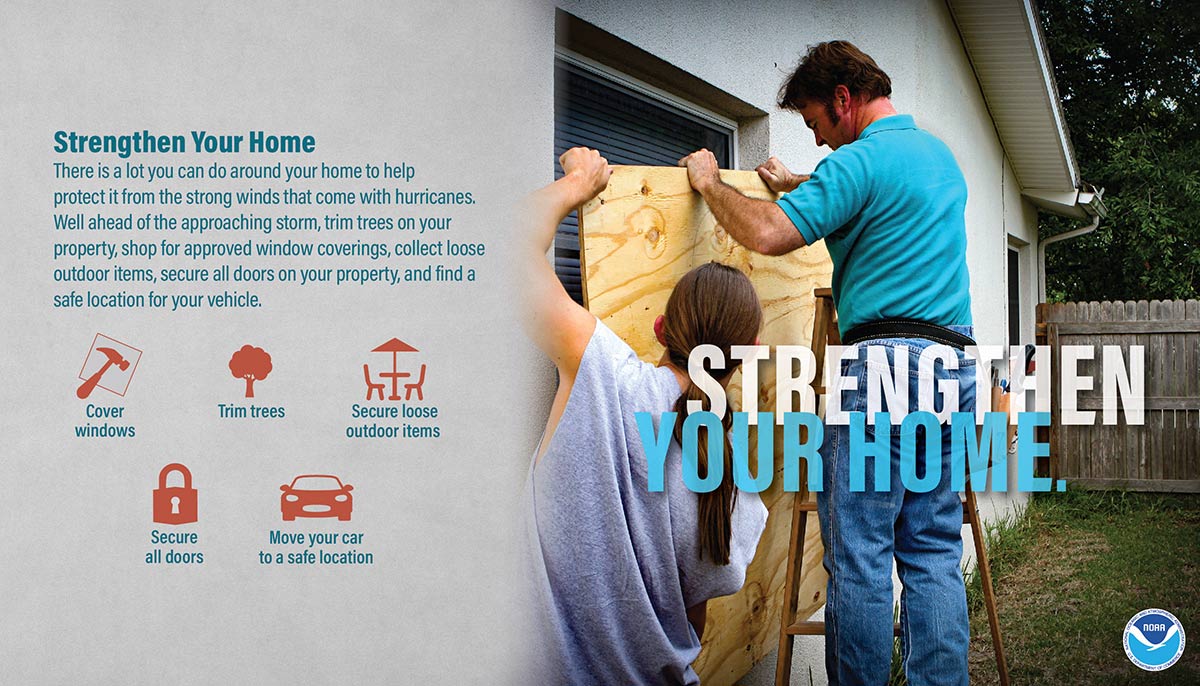


5. Work With and Help Neighbors
Many Americans rely on their neighbors after a disaster, but there are also many ways you can help your neighbors before a hurricane approaches. Learn about all the different actions you and your neighbors can take to prepare and recover from the hazards associated with hurricanes. Start the conversation now with these Neighbor Helping Neighbor strategies.
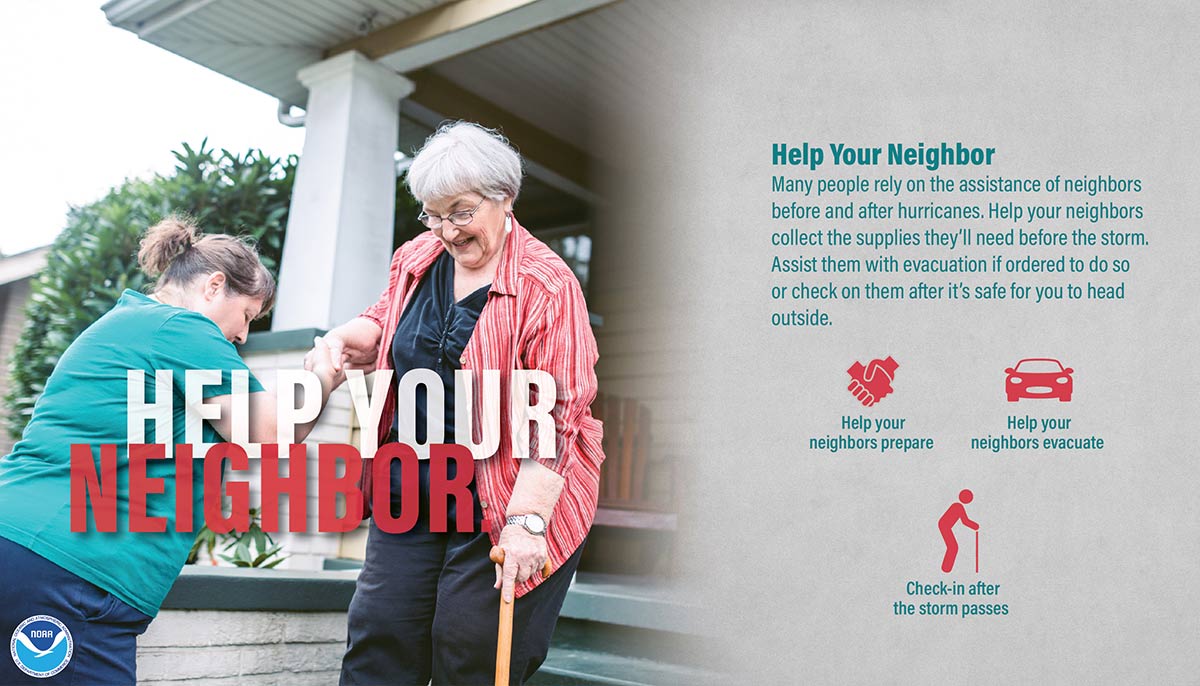


6. Complete Written Hurricane Plan
The time to prepare for a hurricane is before the season begins, when you have the time and are not under pressure. If you wait until a hurricane is on your doorstep, the odds are that you will be under duress and will make the wrong decisions. Take the time now to write down your hurricane plan. Know where you will ride out the storm and get your supplies now. You don’t want to be standing in long lines when a hurricane warning is issued. Those supplies that you need will probably be sold out by the time you reach the front of the line. Being prepared, before a hurricane threatens, makes you resilient to the hurricane impacts of wind and water. It will mean the difference between your being a hurricane victim and a hurricane survivor.
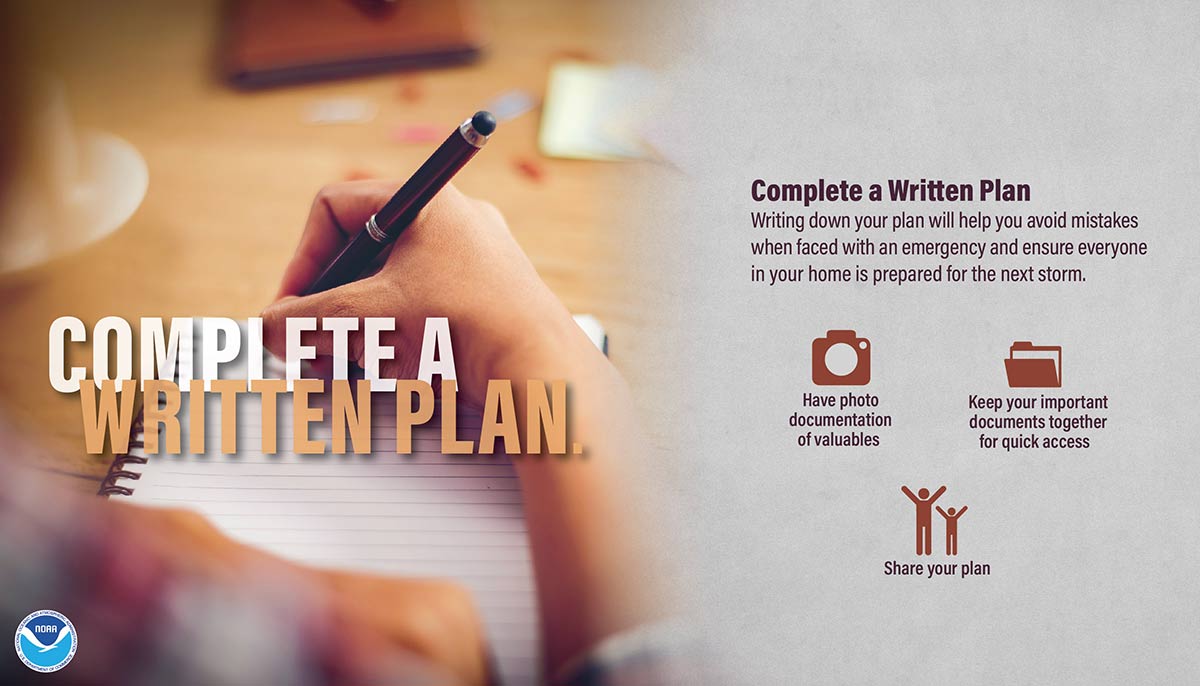


Power Loss and Food Safety
Power outages can be dangerous when dealing with food safety. Knowing how to determine if food is safe and how to keep food safe will help minimize the potential loss of food and reduce the risk of foodborne illness.
- Do not open the refrigerator or freezer. Tell your little ones not to open the door. An unopened refrigerator will keep foods cold enough for a couple of hours at least. A freezer that is half full will hold for up to 24 hours and a full freezer for 48 hours. Instead, eat shelf-stable foods.
- If it looks like the power outage will be for more than 2-4 hours, pack the important items in your refrigerator, such as milk, dairy products, meats, fish, poultry, eggs, and left-overs into your cooler surrounded by ice. Keep temperature at or below 40 degrees. Throw away any items that have been exposed to temperatures greater than 40 degrees for more than two hours.
- If it looks like the power outage will be prolonged beyond a day or so, prepare another cooler with ice for the items in your freezer.
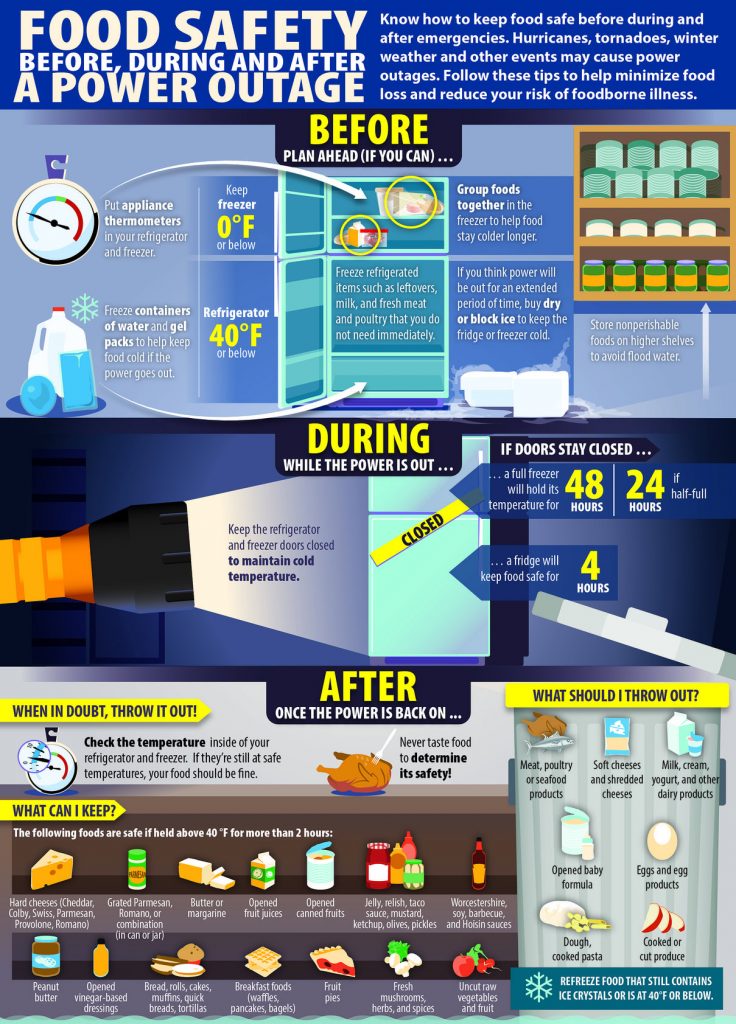

Additional Hurricane Resources
- NWS – National Hurricane Preparedness Week
- NOAA Coastal Services historical hurricane tracks tool
- Hurricane Return Periods
- Maps of evacuation zones courtesy of Federal Alliance for Safe Homes (FLASH)
- National storm surge risk maps
- FLASH Insurance Guide: If Disaster Strikes, Will You Be Covered?
- Find available coverage at www.floodsmart.gov
- FEMA Mitigation
- FLASH: Prepare your home
- FLASH How-To Videos: Protect Your Home From Flooding Video (English/Spanish)
- NHC Prepare
- NWS Hurricane Safety
- FEMA Make Plan
- FLASH Prepare Your Home
- NOAA WeatherReady Nation Hurricane Training Module






